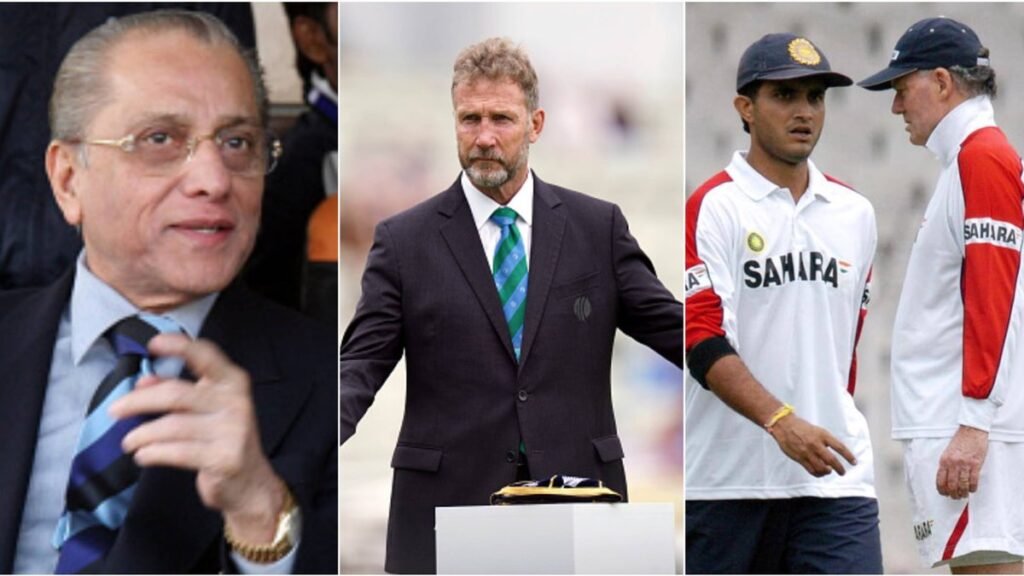
Former India head coach Greg Chappell has taken a fresh swing into cricket boardroom controversy by claiming that ex-Board of Control for Cricket in India (BCCI) President Jagmohan Dalmiya once offered to reduce the suspension of India’s former captain Sourav Ganguly so he could participate in a tour, an offer Chappell says he rejected.
Chappell’s allegation is straightforward yet serious. He recounted that at the start of his tenure, Dalmiya proposed that Ganguly’s ban be cut so that the veteran batsman could join the team for a tour of Sri Lanka. Chappell says he rebuffed the request, telling Dalmiya: “I said no, I don’t want to rort the system, he has to do his time. Dalmiya seemed OK for him to miss.”
The context behind the claim stems from a series of over-rate offences committed by Ganguly during 2005, when the team was under Chappell’s coaching oversight. Chappell’s remarks came after former match referee Chris Broad alleged he had been pressured to be lenient towards India in that period. Chappell’s admission now links the board’s highest level to attempts to influence disciplinary outcomes.
While Ganguly was fined and subsequently suspended for multiple over-rate lapses, Chappell emphasised that his role as coach required him to maintain integrity. The offer from Dalmiya, as claimed, challenged that integrity by offering preferential treatment to a senior player. Chappell insisted he would not comply with what he viewed as a manipulation of the disciplinary system.
This latest revelation revives the infamous Chappell-Ganguly fallout, a saga that shook Indian cricket in 2005-06, when tensions between the coach, the captain, and the BCCI boiled over into public view. That feud ultimately led to Ganguly’s removal as captain and his being dropped from the national side before his eventual comeback. Chappell’s new claims suggest that the controversy may have had deeper roots in governance and board-level interference than previously acknowledged.
Dalmiya’s alleged offer raises questions about the independence of disciplinary processes in Indian cricket, particularly when star players and senior officials are involved. The suggestion that a board president could offer to override or modify a suspension undermines the credibility of the mechanism meant to hold players accountable for lapses such as slow over-rates.
From Greg Chappell’s standpoint, rejecting the offer was a matter of principle. He chose to adhere to the rules rather than accommodate a workaround. His stance sends a clear signal that, at least in his view, board influence should not override fair disciplinary procedures. At the same time, the fact that Dalmiya “seemed OK for him to miss” suggests the board may have been content to let a senior player sit out rather than publicly engage in the issue.
For Ganguly, the incident reopens questions about his treatment during a turbulent stretch in his career. While much has been written about his form and his relationship with Chappell, this new claim highlights that off-field manoeuvres may have played a part in shaping the sporting and administrative trajectory of that era.
In the broader scheme, the revelations may prompt discussions within Indian cricket about governance structures, the independence of match officials and disciplinary authorities, and the extent to which top-level administrators should be insulated from influencing on-field or infra-disciplinary matters. For the fans and pundits, the story reinforces that past controversies may still carry unresolved questions.
Ultimately, Greg Chappell’s statement—simple in words yet heavy in implications—adds a new chapter to the friction-packed history of Indian cricket administration: a chapter that suggests that even decades after the fact, questions about fairness, influence and accountability remain very much alive.

